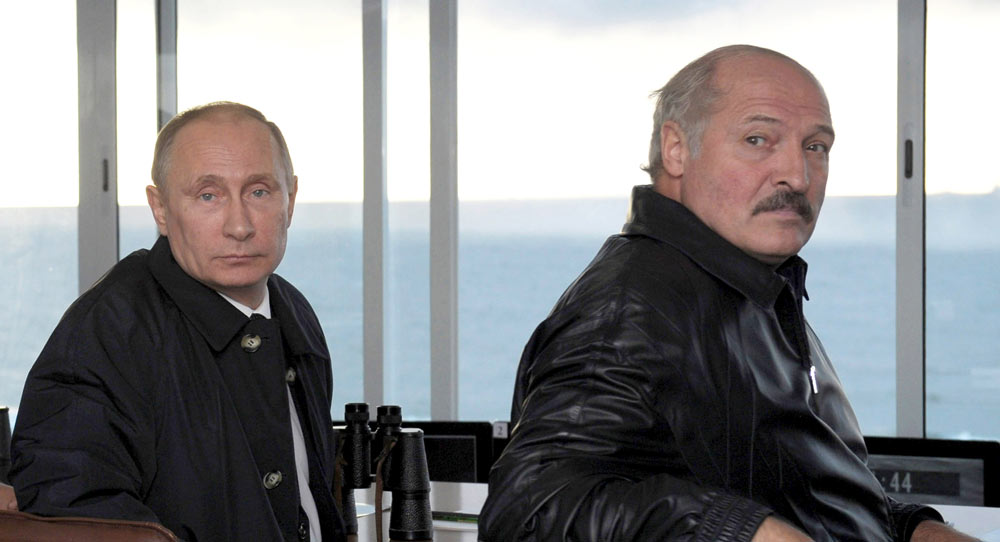Between September 14 and 20, Russia will execute one of its biggest military exercises since the end of the Cold War. While some Western estimates put the number of troops taking part at up to one hundred thousand, the Russians insist these figures are exaggerated. No other exercise has been followed by Western analysts with comparable attention since 1990, though Moscow claims the drills are routine. So far, NATO’s response has been to take the Kremlin at its word, with no plans for additional deployments in the East. But this may change.
The upcoming Zapad-17 exercise, which will take place in Belarus, Kaliningrad, the Baltic Sea, and western Russia, may feature further escalation of NATO air space violations by the Russians, intentional or otherwise. NATO will also carefully look at the kind of offensive scenarios that are being exercised. But the real question that needs to be asked about the maneuvers is not what will happen during them, but what happens after they have been completed.
Until now, the Kremlin has generally been believed to have manned only two principal bases in Belarus. But in order to execute Zapad-17, Russia has been expanding its military infrastructure in Belarus. If, in the aftermath of the exercise, Moscow opts to make these additional military installations permanent, the overall strategic equation along NATO’s Eastern flank will be further undermined. It may prompt Washington to delay current troop rotations and possibly increase deployments in Poland and the Baltics. Depending on what hardware the additional Russian installations were to permanently deploy, the United States might consider deploying a Patriot missile defense system in the region, a scenario that was discussed between U.S. Vice President Mike Pence and Estonian Prime Minister Juri Ratas in July. Such a scenario would require an additional collective response from NATO, in particular to include additional assets deployed to the region, as well as strengthening the logistical infrastructure to facilitate reinforcement.
The upcoming Russian exercise has also caused considerable concern in Ukraine, where President Petro Poroshenko warned that Zapad-17 could be utilized to further threaten the territorial integrity of his country. Reportedly, this was a topic raised by Poroshenko during Alexander Lukashenko’s visit to Ukraine, with the Belarusian president assuring his host that the territory of Belarus would never be used to pose a threat to Ukraine. Underscoring Kiev’s concern, the Ukrainian General Staff announced in August that, at Belarus’ invitation, it would send two observers to the country to monitor the Russian maneuvers.
The aftermath of Zapad-17 in Belarus may well become the litmus test of Russian President Vladimir Putin’s ultimate intentions in the post-Soviet sphere. If Russia decides to sustain its enlarged military presence in Belarus, this would increase the pressure on Lukashenko, who in the past has repeatedly asserted that he is not in favor of such a development. Russia has clearly demonstrated during various snap exercises over the past several years that it can move large forces at long distances, so it would be difficult to argue that additional bases in Belarus are imperative to ensure Russia’s ability to project power in the West. Hence, considering Russia’s exercised transport capability, the decision to leave additional large forces in place in Belarus after Zapad-17—should it come to pass—would carry a key political message both to Lukashenko and to NATO.
Therefore, the upcoming Zapad-17 exercise matters not so much in terms of demonstrating additional Russian military capabilities, which—regardless of Moscow’s claims to the contrary—are orders of magnitude less than the combined military resources of the United Stated and NATO.
Rather, Zapad-17 matters as a demonstration of Russia’s political intent as well as of Putin’s political will. The Russian and Belarusian forces have a long history of post-Cold War integration and an enlarged Russian military presence in Belarus after Zapad-17 would not fundamentally change the tenor of existing military-to-military cooperation between the two states. What would change, however, would be the political perception as to where Eastern Europe may be heading in the not-so-distant future, underscoring Moscow’s commitment to restore Russia’s sphere of privileged interest across the former Soviet Union.
If, after Zapad-17, Moscow decides to force the issue by enlarging its military infrastructure in Belarus nonetheless, it would be the clearest indication since Putin’s 2014 seizure of Crimea that he has decided to transform Belarus into a military outpost against the West. This message would be intended not just for the United States and NATO. It would be heard loud and clear in Ukraine, in the Caucasus, and among the governments of Central Asia.
Andrew A. Michta is the dean of the College of International and Security Studies at the George C. Marshall European Center for Security Studies. Views expressed here are his own.








